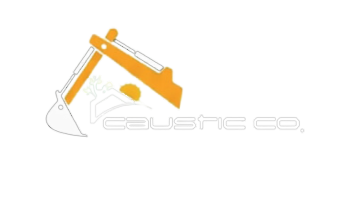Asbestos removal is a critical task that demands careful planning, expertise, and adherence to strict safety protocols. With various methods available, understanding the pros and cons of each approach is essential for property owners and managers seeking to eliminate asbestos-related health risks. This article will compare the most common asbestos removal methods, highlighting their advantages and disadvantages to help you make informed decisions.
Need renovation or decoration services? Click here to contact causticoo.
What is Asbestos, and Why is Removal Important?
Asbestos is a naturally occurring mineral widely used in construction materials due to its durability and heat resistance. However, it poses severe health risks when its fibers become airborne and inhaled. Asbestos exposure can lead to diseases such as asbestosis, lung cancer, and mesothelioma. Thus, professional removal is essential to ensure safety.

Methods of Asbestos Removal
- Encapsulation
Encapsulation involves applying a sealant to asbestos-containing materials (ACMs) to prevent the release of hazardous fibers. This method is ideal when asbestos is in good condition and not easily disturbed.
Advantages:
- Cost-Effective: Encapsulation is often less expensive than complete removal since it requires minimal labor and materials.
- Quick Application: The process is relatively fast, reducing downtime for property owners.
- Minimally Disruptive: There is no need to remove ACMs, preserving the structural integrity of the building.
Disadvantages:
- Not a Permanent Solution: Encapsulated materials may degrade over time, requiring reapplication or eventual removal.
- Limited Applicability: Encapsulation is unsuitable for friable asbestos or areas with heavy wear and tear.
- Enclosure
The enclosure method involves constructing a physical barrier around asbestos-containing materials to isolate them from the environment. This approach prevents fiber release without directly handling the asbestos.
Advantages:
- Durable Protection: Enclosures are robust and provide long-term containment.
- Non-Invasive: The asbestos remains undisturbed, reducing the risk of exposure during the process.
- Ideal for High-Risk Areas: Effective for industrial settings or areas with frequent access.
Disadvantages:
- Space-Consuming: Enclosures can reduce usable space within the building.
- Ongoing Maintenance: Regular inspections and repairs are necessary to ensure the enclosure remains effective.
- Potential for Damage: Asbestos fibers may be released if the barrier is breached.
Our other services : Remove Asbestos in Vancouver
- Removal
Asbestos removal, or abatement, is the most comprehensive method involving completely extracting ACMs from a property.
Advantages:
- Permanent Solution: Eliminates all risks associated with asbestos exposure.
- Increased Property Value: Properties free of asbestos are more marketable and compliant with regulations.
- No Future Maintenance: Unlike encapsulation or enclosure, no ongoing upkeep is needed.
Disadvantages:
- High Cost: Removal is typically the most expensive method due to labor intensity and disposal fees.
- Time-Intensive: The process requires significant planning, execution time, and post-removal inspections.
- Disruptive: Removal may require temporary relocation of occupants and operations.
- Wet Removal
Wet removal involves spraying water or a wetting agent on asbestos materials to suppress fiber release during extraction.
Advantages:
- Minimized Fiber Release: Wetting prevents fibers from becoming airborne, enhancing safety.
- Effective for Friable Asbestos: Particularly useful for materials that crumble easily under pressure.
- Mandatory in Many Jurisdictions: Wet removal complies with regulations in regions prioritizing dust control.
Disadvantages:
- Water Containment Challenges: Proper disposal of contaminated water is essential to prevent environmental contamination.
- Limited in Certain Environments: Not ideal for electrical areas or locations where water use is restricted.
- Requires Specialized Equipment: Additional tools and expertise are needed for practical application.
- Dry Removal
Dry removal is used when wet methods, such as electrical installations or areas prone to water damage, are not feasible.
Advantages:
- Essential for Sensitive Areas: Ideal for environments where water application is impractical.
- Faster Process: Dry methods can sometimes be completed more quickly than wet techniques.
- Less Cleanup: Reduces the need to manage water contamination.
Disadvantages:
- Higher Risk of Fiber Release: Stringent containment measures are necessary without water suppression.
- Intensive Safety Protocols: Requires advanced equipment and strict adherence to regulations to mitigate risks.
- Not Universally Accepted: Many regions restrict dry removal due to health concerns.
Our other services : Complete Guide to Asbestos Removal in Vancouver 2025Remove Asbestos in Vancouver
Key Factors to Consider When Choosing a Method
- Condition of Asbestos Materials: Friable materials may require removal or encapsulation, while non-friable ACMs can often be enclosed.
- Budget: Evaluate the costs of each method, including initial application, maintenance, and potential future expenses.
- Building Usage: Consider the impact of the technique on occupants and operations.
- Regulatory Requirements: Ensure compliance with local laws and guidelines for asbestos management.
Conclusion
Each asbestos removal method has its unique strengths and limitations. Encapsulation and enclosure are cost-effective and minimally disruptive for low-risk situations. Removal is the best choice for long-term safety and compliance, albeit at a higher cost. Wet and dry removal techniques cater to specific environmental and material conditions, ensuring adaptability to various scenarios.
When deciding on the most suitable approach, consult certified asbestos abatement professionals to assess your property’s needs. With the correct method, you can safeguard your health, comply with regulations, and restore peace of mind.



